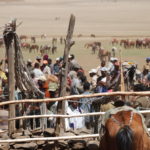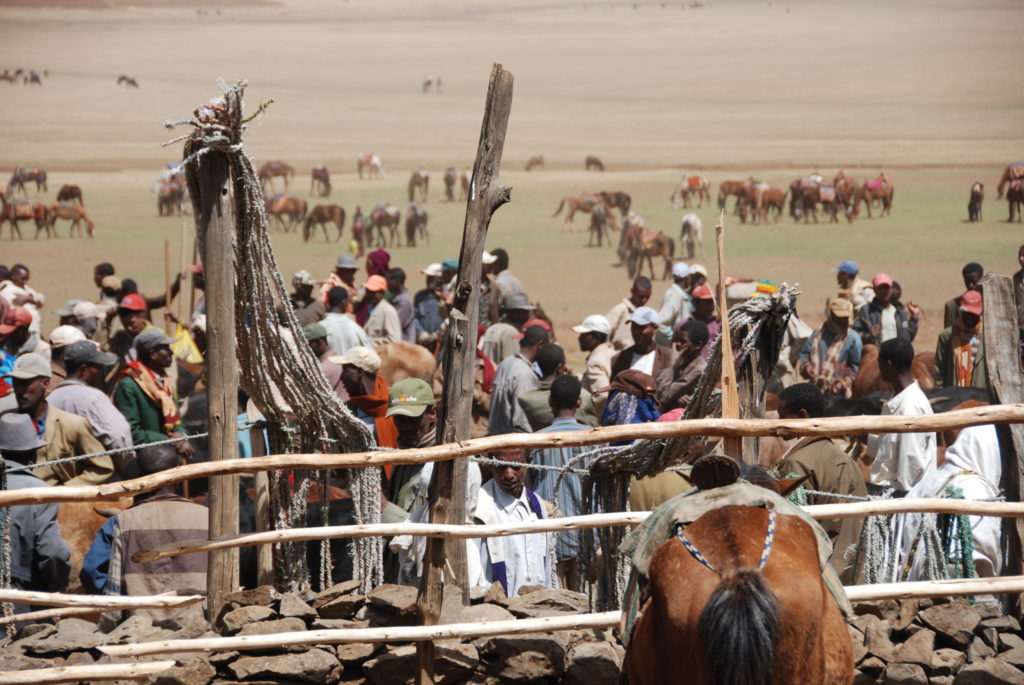
When I settled in Ethiopia in 2001, Addis Ababa was a patchwork of villages joined by green valleys and wastelands and you could gallop in and out of town in a day. The city seemed to encapsulate Alphonse Allais’ quip on the ideal city—‘built in the countryside’. I had installed a horse in my home in Abo Mazoria, by converting the kitchen into a stable and filling one of the bedrooms with hay bales. It was a little eccentric on my part—but then again, not so much. For I had discovered that Ethiopia was an orthodox paradox—a country of individualist conformists. And I had, after all, only followed the lead of my friend Eskender Berhanu (a true phenomenon, with his stable of fifteen polo ponies, a stone’s throw from Arat Kilo).
Leaving my house in Abo Mazoria on horseback at dawn, and after following the valley of the Little Akaki to the west, at that time, you could still reach Menagesha Mountain in a couple of hours. And, on Saturdays, the day of the Guddu market, we raced our mounts over the meadows after drinking home-brewed tela out of tin cans. How distant those boundless gallops on the high plateau now seem! Back then, in Guddu, there was no bottled beer (or Coca-Cola) and the market was solely accessible on foot or horseback. In the year 2001, there were three internet cafes in Addis Ababa, not many more Chinese people—and 68 million Ethiopians. You could leave Addis Ababa on horseback and drink porter for lunch, before cantering back to the capital for supper.
In March 2020, I sipped my coffee every morning in the small kitchen of my brother-in-law’s ‘condominium’, not far from Mexico Square. During my first years in Ethiopia, I crossed Mexico morning and evening. Like most people in the city, I used the blue and white minibuses to get around. I remember the crowds, and the shoving, to get into a minibus. Living in Addis, you measured the population increase in the time it took to find transport. There was an expansion of everything—people, yes, and the cars for the well-to-do, as well as the road expansion they required, and the buildings to house people, in the form of tenements categorized as ‘condominiums’—the only thing that did not multiply, it often seemed on a cold rainy night, were minibus numbers…
Read Galloping Ahead in Ethiopia on Ethiopia-Insight.com

